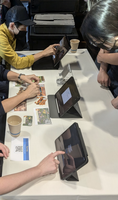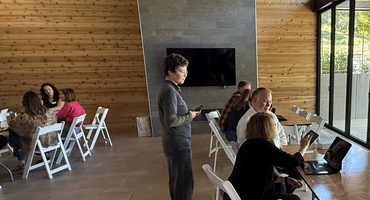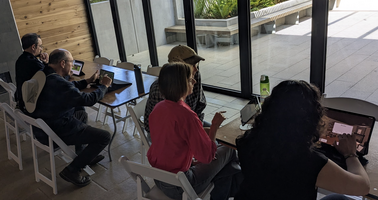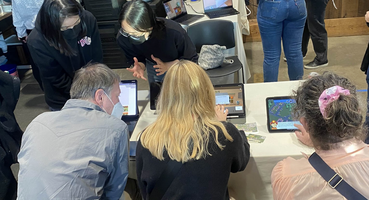Finding Your Community




Designing a game about a serious, real-world topic—like wildfire resilience—requires an extra step beyond doing research: working with the people who live through it.
We’ve been fortunate to collaborate with two communities in California with lived experience of wildfire. Their input didn’t just improve our game—it shaped everything from the scenarios we wrote to the way we talk about risk and calls to actions.
If you’re a designer or researcher thinking about co-creating with a community around a serious issue, here are a few tips based on what worked for us:
1. Start with the Right Community
Look for communities with direct relevance to the topic. In our case, that meant focusing on regions that had experienced recent wildfires. These residents didn’t need to be convinced the topic mattered—they lived it. That made the conversations deeper, more urgent, and more impactful, and ensured the participants would be committed to follow-up conversations. Plan from the beginning to work iteratively with your community, not just one-and-done research interviews, or playtesting the final experience at the end. If done right, the community can be a powerful design resource throughout the entire process.
2. Connect Through Local Organizations
Once we selected our communities of interest, we started building relationships with local organizations—fire safe councils, Offices of Emergency Services, and nonprofits already working on preparedness. These partners helped us:
-
Build trust
-
Spread the word
-
Reach a broader and more representative group of participants
If a local org sees your project as a tool to support their mission, they’ll often become powerful champions.Our community partners even helped us plan and organize workshops, focus groups, and playtest sessions in their communities.
3. Design for Two Kinds of Stakeholders
A strong target community includes:
-
Experts and local leaders who want the final game to be useful—whether that’s in education, outreach, or policy work.
-
Future players—the people actually living in at-risk areas. Their stories, needs, and challenges should drive the design.
You need both perspectives to make a compelling game for impact. Experts ensure the game is accurate and useful; residents ensure it’s grounded and relevant.
4. Center Lived Experience
Be ready to shift your design based on what you hear. Some of our strongest scenarios came directly from community members' stories—stories that challenged our assumptions and reshaped our mechanics.
Listening is not just a first step—it’s a continuous part of the design process.
Community-driven game development takes time, care, and humility. But when it works, the result is a game that resonates—not just because it’s well-designed, but because it reflects the people it was made for.
Wildfire Minigames Collection
A collection of minigames to help people develop preparedness and resilience to wildfire
| Status | Released |
| Authors | Wildfire UCSC, Yiyang Lu |
| Genre | Simulation |
| Tags | minigames, wildfire |
More posts
- Launching a Game for Impact: The Challenges without a Marketing Budget1 day ago
- The Benefits of Multiplayer, and How to Keep it in Scope2 days ago
- Approaching User Experience: Crafting an Interactive and Immersive UI2 days ago
- Implementation: Simulating Dual-Lane Evacuation Traffic3 days ago
- Art Direction: Why We Chose a Stylized, Low-Poly Look for Our Wildfire Games4 days ago
- Tech Discussion: Simulating Fire That Feels Real4 days ago
- From Workshop to Production – Turning Community Stories into Playable Scenario...5 days ago
- Critical Interdisciplinarity6 days ago
- When Good Ideas Go—Iterating with Communities and Experts7 days ago

Leave a comment
Log in with itch.io to leave a comment.